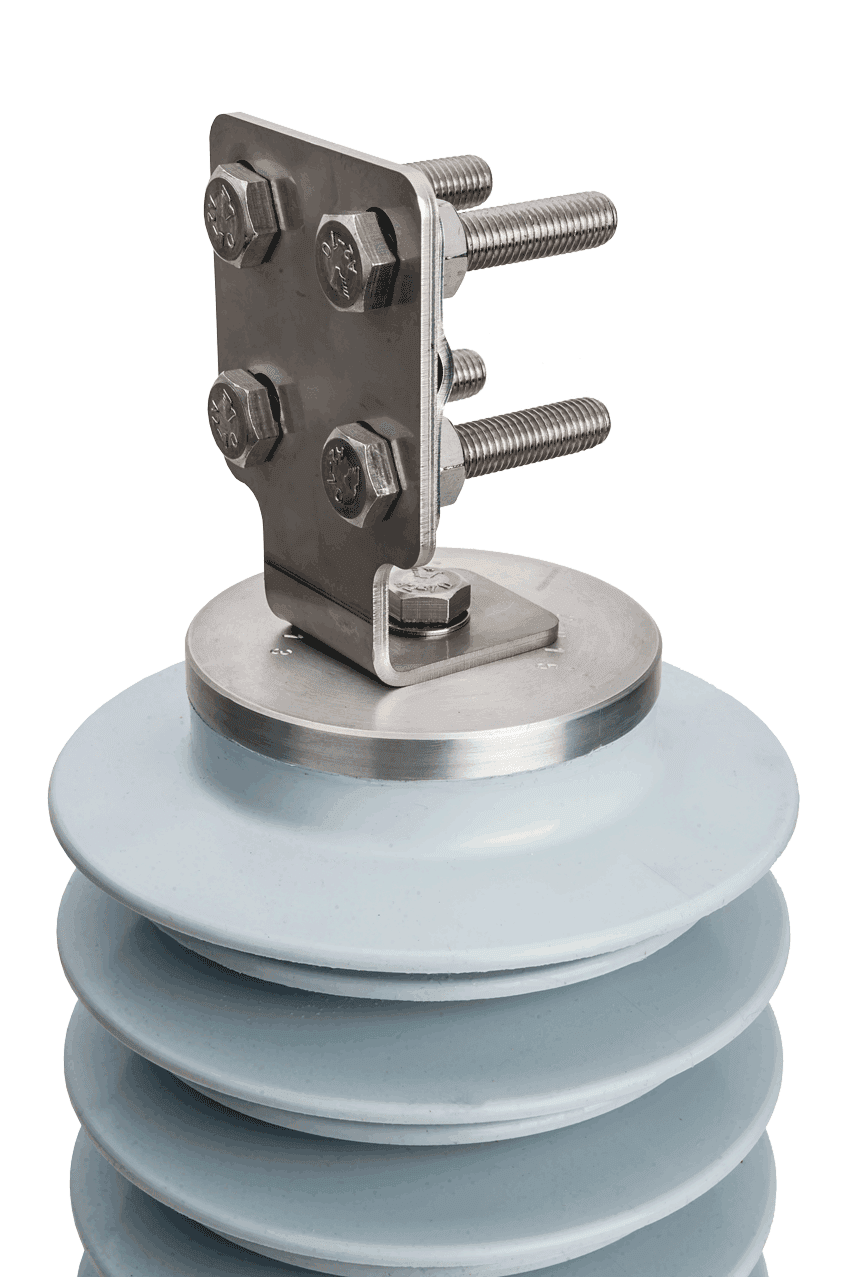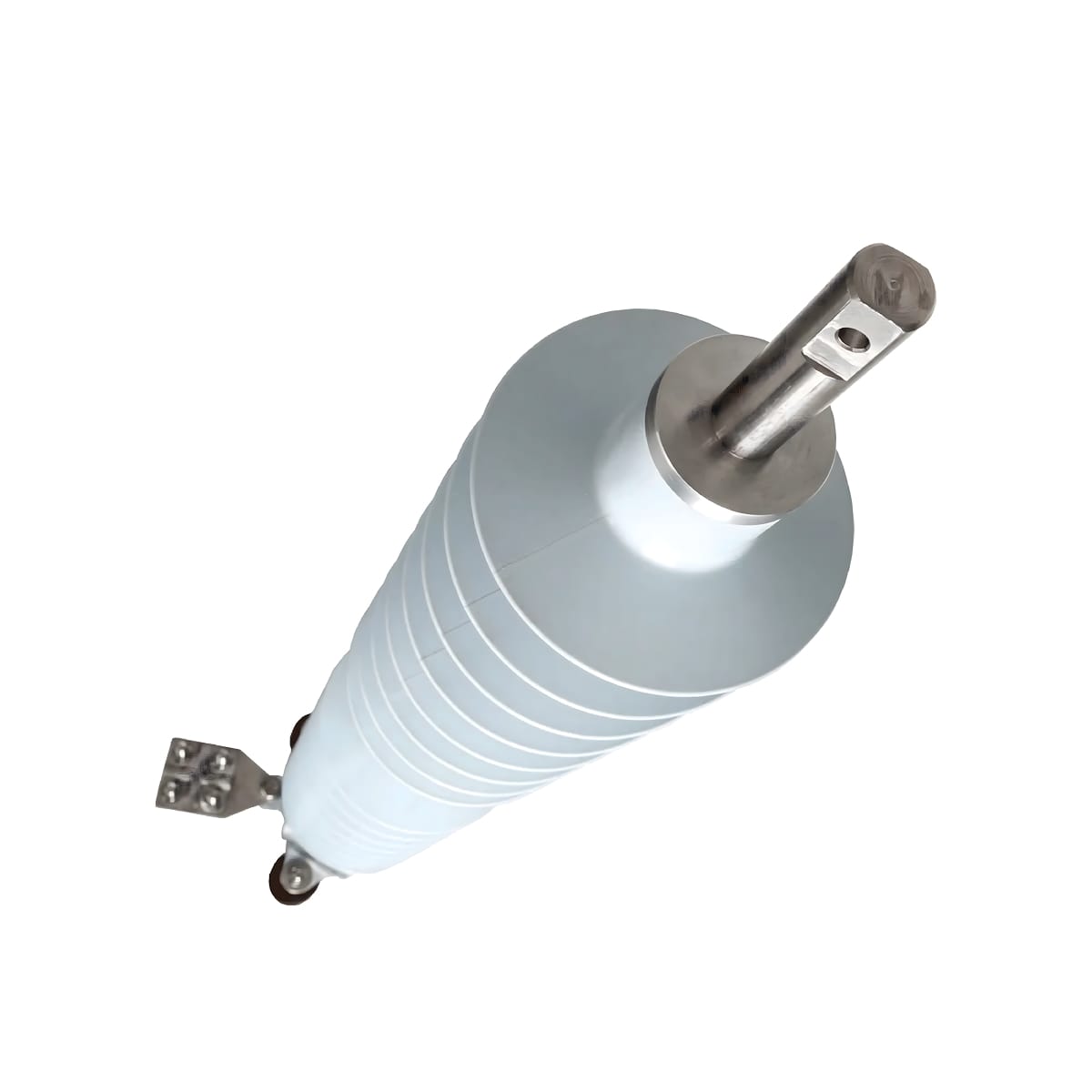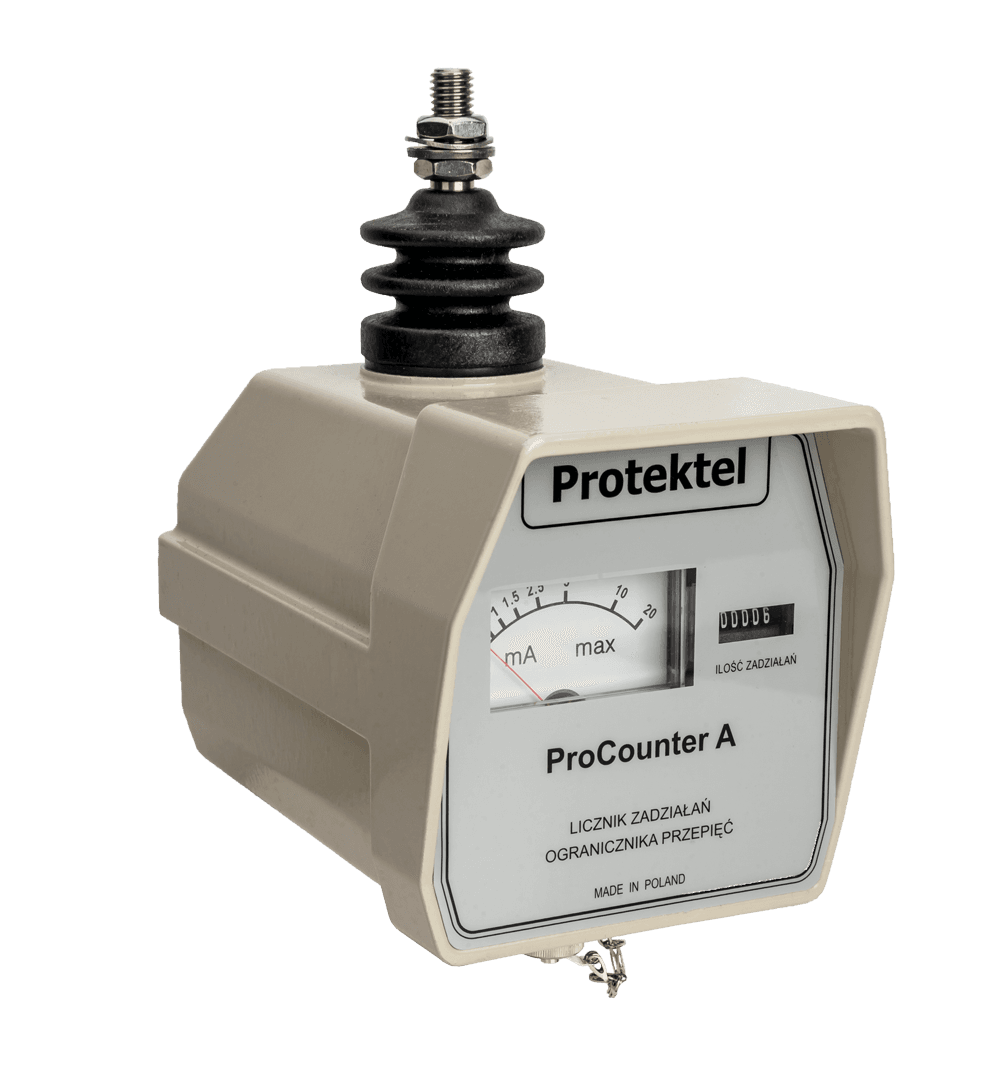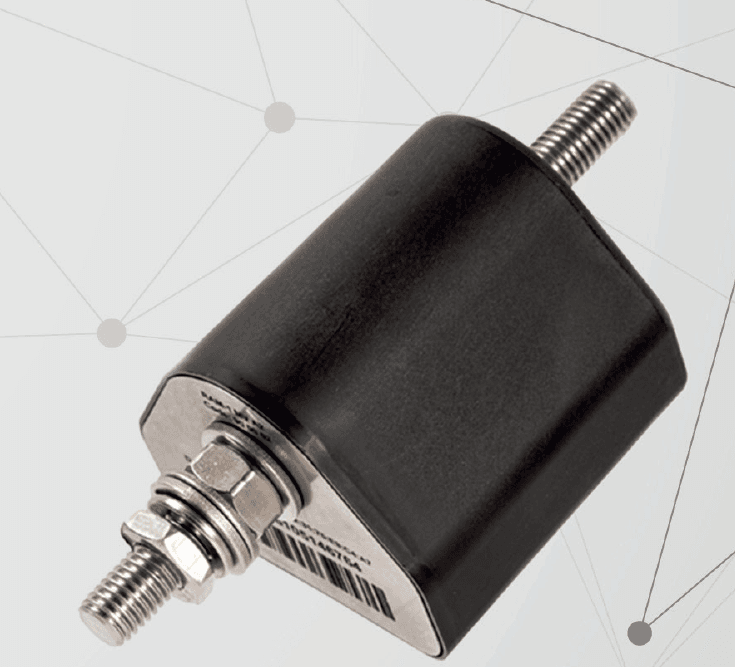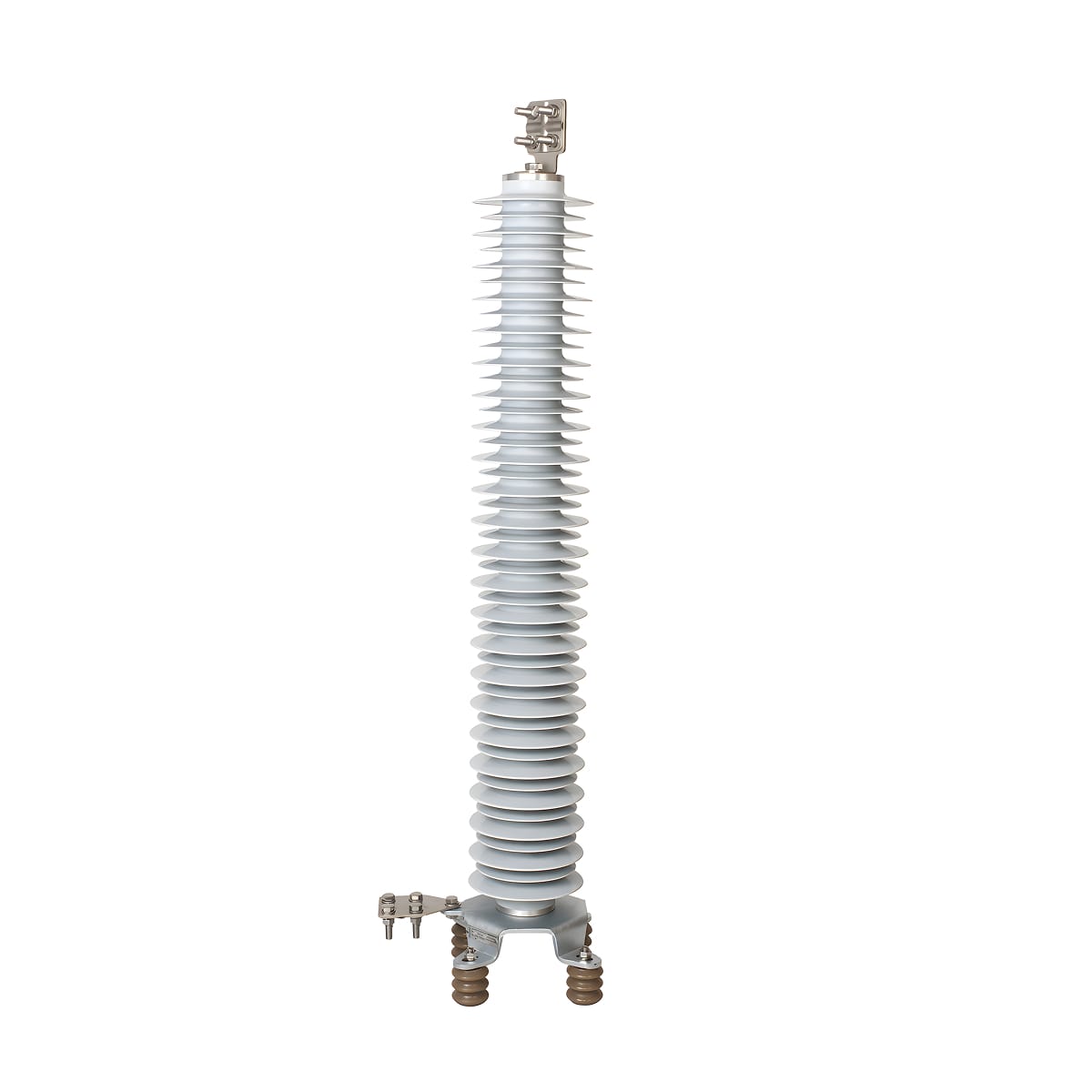Table of contents:
- High-Voltage Surge Arrester Types & Applications
- Surges in High-Voltage Networks – Effects and Risks
- How Does a High-Voltage Surge Arrester Work?
- Applications of High-Voltage Surge Arresters
- Key Parameters of HV Surge Arresters – How to Choose the Right Model?
- PROXAR Brand High Voltage Surge Arresters – Highest Quality from a Polish Manufacturer
- Why Choose Protektel Arresters?
- Looking for a HV Surge Arrester? Contact Us!
High-Voltage Surge Arrester Types & Applications
High-voltage networks are composed predominantly of overhead lines. Consequently, they are much more exposed to lightning strikes compared to medium voltage networks. The only way to effectively protect their infrastructure is by utilizing high-voltage surge arresters, which can also protect the network against internal surges. What solutions are used for this purpose and what exactly do they have to withstand?
Surges in High-Voltage Networks – Effects and Risks
Regardless of the voltage level, power grids are always at risk from surges, which means sudden increases in voltage above the nominal value of the system. Their most obvious source is the aforementioned lightning, known as external surges. These are further categorized as direct (lightning strikes directly on the infrastructure) and induced (caused by nearby ground discharges).
Additionally, there are internal surges that arise within the network itself. This category includes:
- Switching surges – resulting from switching operations such as turning equipment on or off.
- Accidental surges – caused by sudden load changes.
- Short-circuit surges – resulting from short circuits within a given installation.
Regardless of the type and intensity of surges, their direct result in high-voltage networks is usually damage to infrastructure components. In the case of the strongest discharges, components can even be destroyed, which leads to disruptions in power supply continuity and costly outages.
Although it’s impossible to completely prevent the surges, operators of transmission systems, substations, or power plants can effectively protect the grid from them. A key factor in this case is the proper selection of high-voltage surge arresters.
How Does a High-Voltage Surge Arrester Work?
Before discussing the protection choice, let’s take a closer look at Protektel’s PROXAR surge arrester. Our solution is based on the metal oxide varistor (ZnO). At the operating voltage, the varistor is in a non-conducting state – a capacitive current flows through it at that time. At the moment of overvoltage, it immediately transitions to the conducting state, lowering its resistance to nearly zero. This limits any further increase in voltage, thereby suppressing the overvoltage, after which the arrester returns to its operating state.
The mode of operation described above is due to the nonlinear voltage-current characteristics of varistors, which are the only active element in their design. Unlike older spark-gap arresters, PROXAR’s non-spark-gap arresters suppress surges over a wider range, including switching or dynamic surges.
Applications of High-Voltage Surge Arresters
Surge arresters are one of the key elements in the protection of high-voltage networks, especially where infrastructure is exposed to particularly strong surges. Let’s take a closer look at the places and configurations where they are most commonly used.
Typical operating environments for HV surge arresters include extensive and heavily loaded parts of the network – substations, high-voltage transmission lines, and power plants. They act as direct protection for the most critical infrastructure components, such as current and voltage transformers, composite insulators, and distribution equipment.
In practice, different mounting configurations of arresters for HV networks are used, adapted to local conditions and installation requirements. The most common form is the so-called station arrester – mounted directly at the transformer or at the switching station, in close proximity to the protected element. Such a location allows for immediate dissipation of surge energy to the ground, without endangering other components.
The selection of a suitable solution depends not only on the rated voltage and power class, but also on a detailed analysis of the operating environment. This includes the location in the storm zone, operating conditions, and the configuration of the grounding network. In each case, the goal remains consistent: to provide maximum protection for the infrastructure with minimal impact on its ongoing operation.
Key Parameters of HV Surge Arresters – How to Choose the Right Model?
Choosing the right high-voltage surge arrester is not just a matter of meeting technical requirements. The most important factor is to match its parameters to the characteristics of a particular system. After all, an incorrectly selected model may prove to be insufficient under conditions of dynamic network operation, thus exposing the infrastructure to the risk of damage or excessive wear.
One of the most important parameters to consider is the maximum continuous operating voltage (Uc). This is the highest voltage that can exist continuously at the terminals of an arrester without causing sustained conduction. In a high-voltage electrical system, the value of Uc should be higher than the maximum operating voltage of the network, taking into account tolerances and transient phenomena. This prevents accidental activation of the arrester under normal operating conditions.
Another important parameter is the energy absorption capability of the arrester, often referred to as its “energy class.” This parameter determines the maximum amount of energy that the device is able to repeatedly and safely dissipate during a single or multiple strikes and return to a stable state of operation under network voltage. Depending on the type of installation—HV substation, transmission line, or power plant—a Class I, II, or III arrester may be required. They differ in the allowable level of impulse energy and frequency of operation.
The selection of an arrester does not end with electrical parameters. Equally important are the environmental conditions in which the device will operate. Mountainous areas, industrial zones with high air pollution, and places with high humidity all affect the durability of the external insulation of the arrester. In such cases, it is advisable to choose silicone-covered models, which have excellent weather resistance.
In practice, the selection of an HV arrester should always be based on a comprehensive analysis of the operating conditions of the system – from the nominal voltage and type of protected equipment, to the frequency of surges and local environmental conditions. Only then is it possible to provide effective, long-term protection without unnecessary oversizing or the risk of premature device wear.
PROXAR Brand High Voltage Surge Arresters – Highest Quality from a Polish Manufacturer
Protektel offers its customers three models of surge arresters designed to protect high-voltage networks. These are PROXAR-IIN AC, PROXAR-IIIN AC, and PROXAR-IVN AC, designed to protect against discharges of different classes.
| Model | PROXAR-IIN AC | PROXAR-IIIN AC | PROXAR-IVN AC |
| Discharge class* | SL | SM | SH |
| System voltage (Um) | 7.2–145 kV | 3.6–245 kV | 3–145 kV |
| Rated voltage (Ur) | 6.0–144 kV | 1.0–228 kV | 1–144 kV |
| Discharge current (In 8/20 μs) | 10 kA | 10 kA | 20 kA |
| Limiting current (Ihc 4/10 μs) | 100 kA | 100 kA | 100 kA |
*According to IEC 60099-4:2014.
Common features of PROXAR brand arresters are their use of ZnO non-directional varistor technology, silicone insulation, and resistance to environmental conditions. All of them are suitable for operation in overhead and indoor conditions, at altitudes up to 1,000 meters above sea level.
Why Choose Protektel Arresters?
As a manufacturer of electric power protection with many years of experience, we provide our customers not only with the highest quality products, but above all with comprehensive advice. Our partners who decide to cooperate with us can count on support from A to Z – starting with the selection of components, through their implementation and commissioning, and ending with daily operation and technical support.
In addition, we have our own testing laboratory, so we are able to adapt our products to the requirements of a particular project according to the customer’s wishes. Our solutions also comply with the requirements of PTPiREE.
Looking for a HV Surge Arrester? Contact Us!
To select arresters suitable for a particular project, we encourage you to use our contact form. After completing it, we will contact you to discuss the details – our sales department will take a close look at your needs and then propose specific solutions.


